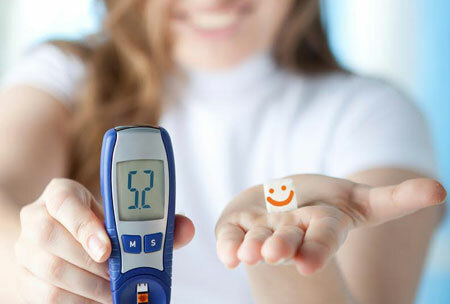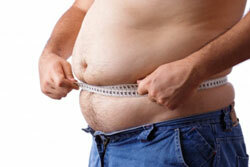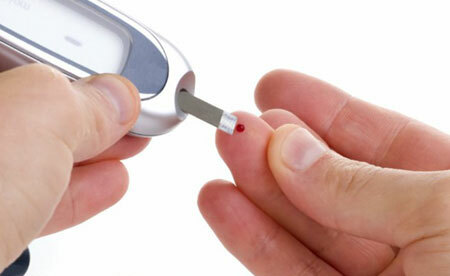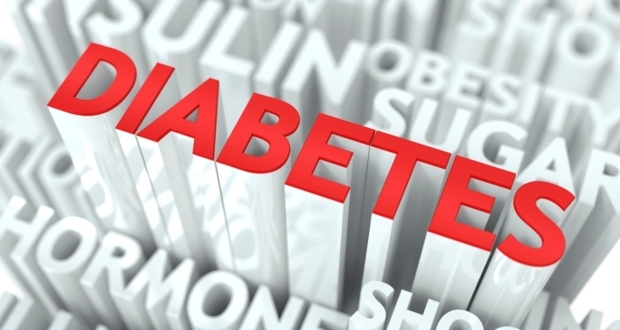Starting with an increase in glucose concentration of blood, diabetes acquires a detailed picture of the disease, in which pathological changes affect almost all organs. In diabetes mellitus, the exchange of the most important energy substrate for the cells of the body - glucose( or sugar) suffers.
This substance a person receives from food. Then the blood delivers it to the cells. The main consumers of glucose are the brain, liver, fat tissue, muscles. To penetrate the cells, glucose requires insulin - a hormone.
An exception to this rule are neurons of the brain. In them, sugar comes without the participation of this hormone through special transport channels.
According to the ICD-10 diabetes mellitus type 2 belongs to the 4th class - diseases of the endocrine system and metabolic disorders. The disease is encoded by the cipher E11.
Contents of
- 1 Type 2 diabetes mellitus - What is it?
- 2 Causes of
- 3 Symptoms of type 2 diabetes
- 4 Sugar before and after eating
- 5 Treatment of type 2 diabetes
- 6 Diabetes diet for type 2
- 7 Complications of
Diabetes mellitus type 2 - What is it?

Insulin produces special cells of the pancreas( endocrine beta cells).In type 1 diabetes, there is an absolute decrease in insulin, i.e.it is not synthesized at all.
Type 2 is characterized by a relative lack of this hormone. This means that at the beginning of the disease, beta cells can produce normal( even elevated) amounts of insulin, but then their compensatory reserve decreases.
Therefore, the work on "pumping" sugar inside the cell is not carried out in full. Excess sugar remains in the blood. And since the body does not have anything "extra" in the metabolism, excess glucose begins to "sugar" protein structures, such as the inner shells of vessels and nervous tissue, which affects their functioning poorly.
This "sugaring"( or scientifically - glycation) is the main factor in the development of complications.
At the heart of type 2 diabetes is the impaired sensitivity of tissues to insulin. Even at its high level, observed at the beginning of the disease, hyperglycemia is observed. Typically, this is due to defects in cellular receptors. Usually, this condition is observed with obesity or genetic defects.
Over time, there is a functional depletion of the pancreas, which can not produce hormones for a long time. At this stage, type 2 diabetes passes into an insulin subtype, i.e.tablets reduce the glucose level is no longer possible. In these cases, regular administration of insulin as a medicine is required.
Causes of
Diabetes is a disease with a complex pathogenesis( the mechanism of the formation of the pathological process).The reason for the "poor work" of insulin, as indicated above, is not in the hormone itself, but in a poor susceptibility to insulin cells. This condition is called insulin resistance.
It is characterized by the presence of insulin, but the cells-consumers of glucose do not react to it or react unpredictably and insufficiently.

obesity
Obesity in type 2 diabetes creates the conditions when the usual amount of insulin is simply not enough to "service" all fat cells. In addition, adipocytes( fat cells) independently synthesize contrinsular factors, which additionally increase the glucose level in the blood.
Another pathogenetic factor of increasing sugar in a second type of disease is the lack of insulin production immediately after a meal. This leads to a critical increase in glucose, which damages the blood vessels.
In the future, hyperglycemia is observed even without a connection with food. This all creates the preconditions for the gradual extinction of the functional activity of beta-cells. As a result, the level of insulin is sharply reduced until complete absence, when insulin demand appears.
Modern medicine identifies factors of diabetic risk:
- age is more than 40 years;
- obesity;
- overeating with carbohydrates and fats, especially animal origin;
- diabetes in relatives, in the presence of which the risk of getting sick is 40%.However, diabetes does not apply to genetic diseases. It has only a genetic predisposition, which is realized only in the presence of certain external factors, for example, an excess of carbohydrates in the diet;
- low physical activity, becauseMuscle contractions normally stimulate the entry of glucose into the cell and its non-insulin dependent cleavage;
- pregnancy. Women can develop gestational diabetes, which, after childbirth, can disappear or go on to become a chronic disease;
- psychoemotional stress. This condition is accompanied by an increased formation of contrinsular hormones( adrenaline, norepinephrine, corticosteroids) that increase the glucose level in the blood.
At the modern level of the development of medicine, 2 type of diabetes is considered not as a hereditary disease, but as a "disease of a way of life".Even in the presence of burdened heredity, this carbohydrate disorder will not develop if a person:
- has limited the consumption of sweet and other easily digestible carbohydrates;
- watches its weight, not allowing its excess;
- regularly performs physical exercises;
- excludes overeating.
Symptoms of type 2 diabetes
Symptoms of type 2 diabetes mellitus are not specific. As a rule, their appearance is not noticed.a person does not experience significant discomfort in the state of health.
However, knowing them, you can contact a doctor in a timely manner and determine the glucose concentration in the blood. This will guarantee successful compensation for diabetes and reduce the risk of complications.
The main manifestations of this pathology are:
- An increase in the amount of urine that causes a person to visit the toilet even at night.
- Desire to drink plenty of water all the time.
- Dry mouth.
- Sensation of itching of mucous membranes( vagina, urethra).
- Increased appetite associated with impaired synthesis of leptin.
Poor wound healing ability, furunculosis( pustules on the skin), fungal infections, impotence are frequent and important indicators of the presence of diabetes. The disease can also be detected for the first time only when hospitalized for a heart attack or stroke. This indicates the development of severe complications.
Classical symptoms appear only with an increase in the glucose level above the renal threshold( 10 mmol / l), i.e.at this level, sugar appears in the urine. Excess glucose normative values, but less than 10 mmol / l blood, as a rule, a person is not felt.
Therefore, random diagnosis of type 2 diabetes is a very common phenomenon.
It should be noted that glycation of proteins begins immediately at a glucose level exceeding the norm. Therefore, early detection of diabetes will avoid the serious complications associated with the deposition of glycated proteins in the vascular wall.
Sugar rate before and after eating

Blood sugar level measurement, photo
With type 2 diabetes, the sugar norm in the blood before and after food is different. These indicators should be determined in the morning on an empty stomach and after a 2-hour interval after a meal, respectively.
Interpretation of the result depends on the type of material being examined and the time of food intake:
- An empty stomach is 5.5 mmol / L and less in the blood of the finger( whole blood).
- An empty stomach is 6.1 mmol / L or less in a capillary or venous plasma( the material is produced in the laboratory by venous puncture or finger digestion).
- After a 2-hour interval after a meal( at any measurement) - 7.8 mmol / l or less, not higher.
Treatment of type 2 diabetes
 Modern treatment of diabetes 2 affects different parts of the pathological process. Used as an independent intake of a hypoglycemic drug, and a combination. The most optimal choice is determined by an individual endocrinologist.
Modern treatment of diabetes 2 affects different parts of the pathological process. Used as an independent intake of a hypoglycemic drug, and a combination. The most optimal choice is determined by an individual endocrinologist.
Medications treatment of type 2 diabetes:
1. Biguanides ( active ingredient metformin, preparations: Siofor, Glucophage).They reduce insulin resistance, the production of glucose by the liver, increase its utilization, reduce the absorption of excess sugar in the digestive tract, and also reduce body weight while fighting obesity.
Recently, one more positive property of these drugs has been revealed: they are able to slow down the aging processes that appear early in patients with diabetes. This effect is manifested not only in diabetics, but also in healthy people.
2. Thiazolidinediones ( glitazones - pioglitazone, rosiglitazone) - effectively reduce insulin resistance, reduce the production of glucose by the liver, increase its absorption by cells, improve the lipid profile( reduce the amount of triglycerides and fatty acids).
Drugs in this group are given preference for high cholesterol levels in the blood.
3. Sulfonylurea prodrugs ( glibenclamide( Maninil), glimepiride( Amaryl), gliclazide( Dibeton), glycvidone( Gljurenorm), agents for increasing insulin synthesis by the pancreas
It is rational to combine with biguanide preparations that reduce insulin resistance. Gliids ( nateglinide, repaglinide) or prandial regulators - preparations of ultrashort and rapid action aimed at the restoration of secretion of insulin immediately after eating, eliminate the violation of the early phase of the secretion of thishormone
Used when there is a postprandial form of hyperglycaemia
5. Intinomimetiki ( exenatide: Baeta) This is a new class of drugs for diabetics that strengthen the action of incretin hormones, which affect the normal secretion of insulin, suppress the sugar-enhancing effect of glucagonis produced in the liver.)
Additional positive effects are a slowing down of the passage of food through the intestines, which helps reduce glucose uptake and reduce weight.
6. DPP-IV inhibitor( sitagliptin) .The effect of this drug is similar to the previous one. It is associated with incretins, the level of which increases. This has a positive effect on hyperglycemia.
7. Alpha-glucosidase inhibitors ( the only representative is acarbose), which act solely in the lumen of the digestive tract. They slow the absorption of glucose, without affecting the secretion of insulin.
The use of acarbose with a preventive goal of 37% reduces the risk of disease( Stopp NIDDM study data).
8. Combined preparations of contain active substances of different groups, for example metformin glibenclamide( Glybometh, Glucovans) in one tablet or capsule, which makes the treatment more convenient and acceptable for the patient.
9. Insulin. With the absolute lack of a hormone that develops over time, subcutaneous insulin injections are used( insulin demand).Treatment with this hormone begins with a combination of tablets and insulin of prolonged( average) action. In the future, a complete transition to hormone therapy is possible.
Diabetes diet for type 2

Principle of nutrition for type 2 diabetes, photo
As a lifestyle disorder, type 2 diabetes is effectively treated with a diet, especially at the initial stage. Reducing weight can reduce insulin resistance and eliminate relative insulin deficiency caused by obesity.
The essence of diets in diabetes is the maximum slowdown in the intake of sugar from the intestine into the bloodstream. This will avoid a sharp rise in the level of glycemia immediately after a meal. Therefore, all fast-digested carbohydrates are excluded from nutrition( they always have a sweet taste).
Replenishment of the body with energy reserves should occur as a result of the metabolism of complex carbohydrates, long molecules of which can not immediately absorb into the blood and require a longer digestion.
It is also important to limit the intake of any fats and oils in the diet. Therefore, animal fats are excluded and preference is given to unrefined oils in limited quantities.
Diabetes mellitus type 2: what can I eat and what can not( table)?
| Recommended( green) | Limited( yellow) | Excludes( red) |
| All kinds of vegetables( especially dark leafy greens) in fresh and cooked form Low-fat meat( chicken, beef, turkey, rabbit) Dairy products 0-1% fat Cottage cheese skimmed Low-fat fish Whole-grain, bran bread( in moderation) Whole fruits, berries( except bananas and grapes) in moderate quantities All kinds of cereals, cereals, pasta( eat moderately) Cooking:boiled, steamed and stewed dishes | Fatty fish Medium-fat dairy products 1-3% Dried fruits Fruit juices Oils( prefer unrefined) Sweeteners( xylitol, sorbitol) | Everything that has a sweet taste due tosugar Refined flour products Fatty meat( pork, lamb) Fats Dairy products with a fat content above 3.5% Curd fat content above 5% Sweet beverages with sugar Alcohol Honey, jam Grape, banana( little fiber) Sweet juices |
The "Traffic light principle" described in the table, replaced the more difficult diet for the patient in routine life, known diet No. 9.However, in the stationary treatment of type 2 diabetes, the diet "table number 9" is used quite actively. The principles of this diet are similar to "traffic lights".
An important component of treatment is physical activity. Exercises and walking allow you to lower blood sugar, having a therapeutic effect. This allows you to reduce the dose of a hypoglycemic drug.
Complications of
Late complications are caused by glycation of protein structures. The latter injure vessels of various diameters, incl.and microcirculatory bed. Later complications are:
- diabetic polyneuropathy( defeat of nerve endings);
- diabetic angiopathy( atherosclerotic vascular lesion);
- diabetic retinopathy( retinal disease);
- diabetic nephropathy( impaired renal structures);
- diabetic foot syndrome.
Acute complications are different types of com. They are based on a sharp fluctuation of metabolites( glucose, ketone bodies).The most frequent acute complication is a sharp decrease in blood sugar( hypoglycemia and the corresponding kind of coma).
In elderly patients, the development of hyperosmolar coma is possible, which is caused by electrolyte dysfunction during dehydration.
Diabetic ketoacidosis occurs rarely with SD 2.
- Read more about complications of diabetes.



